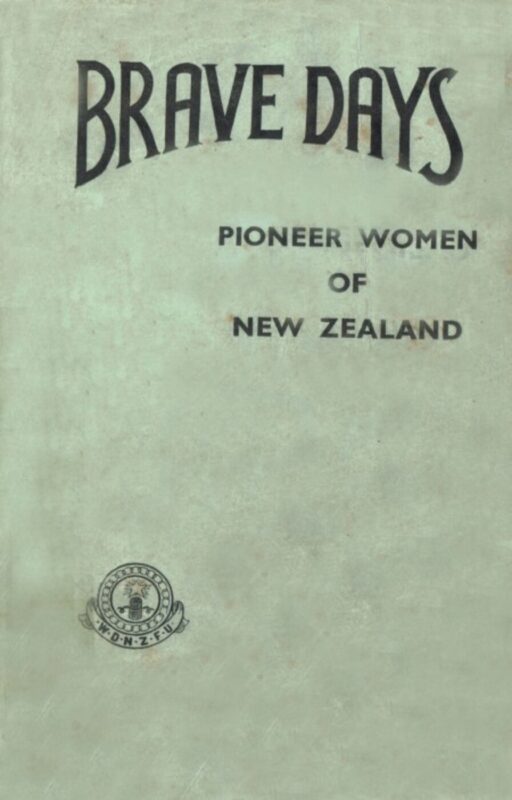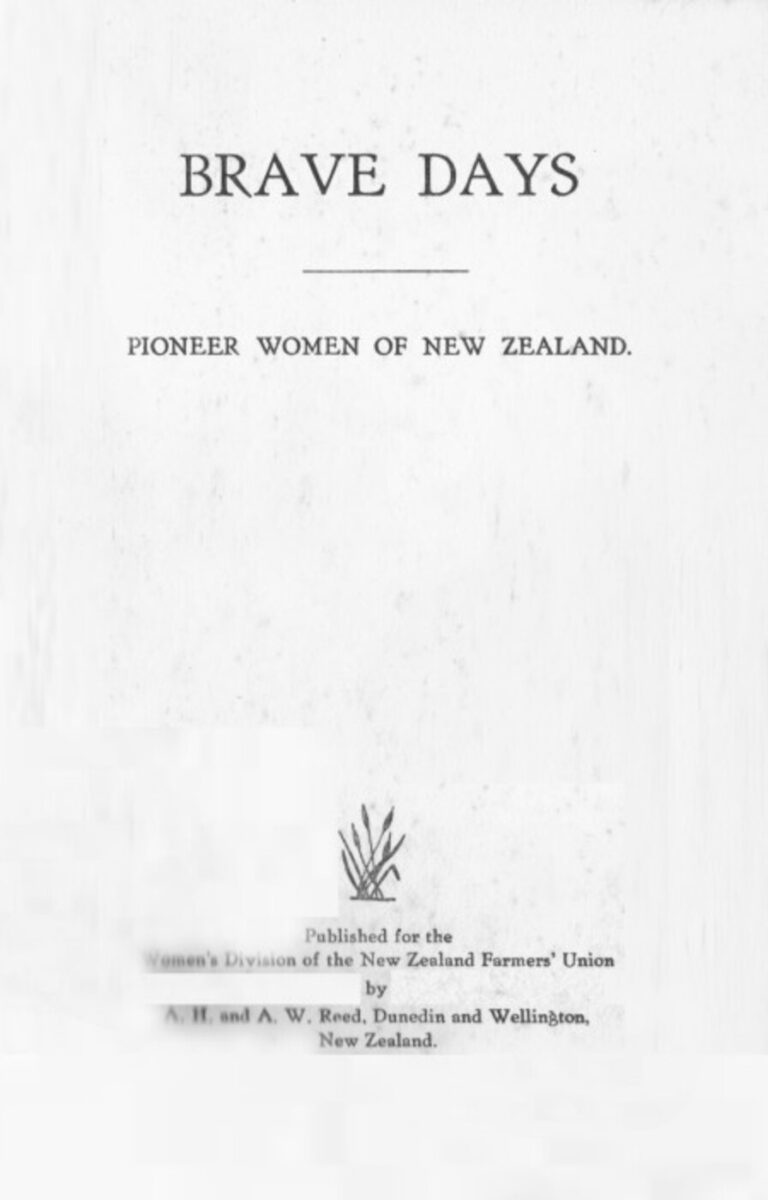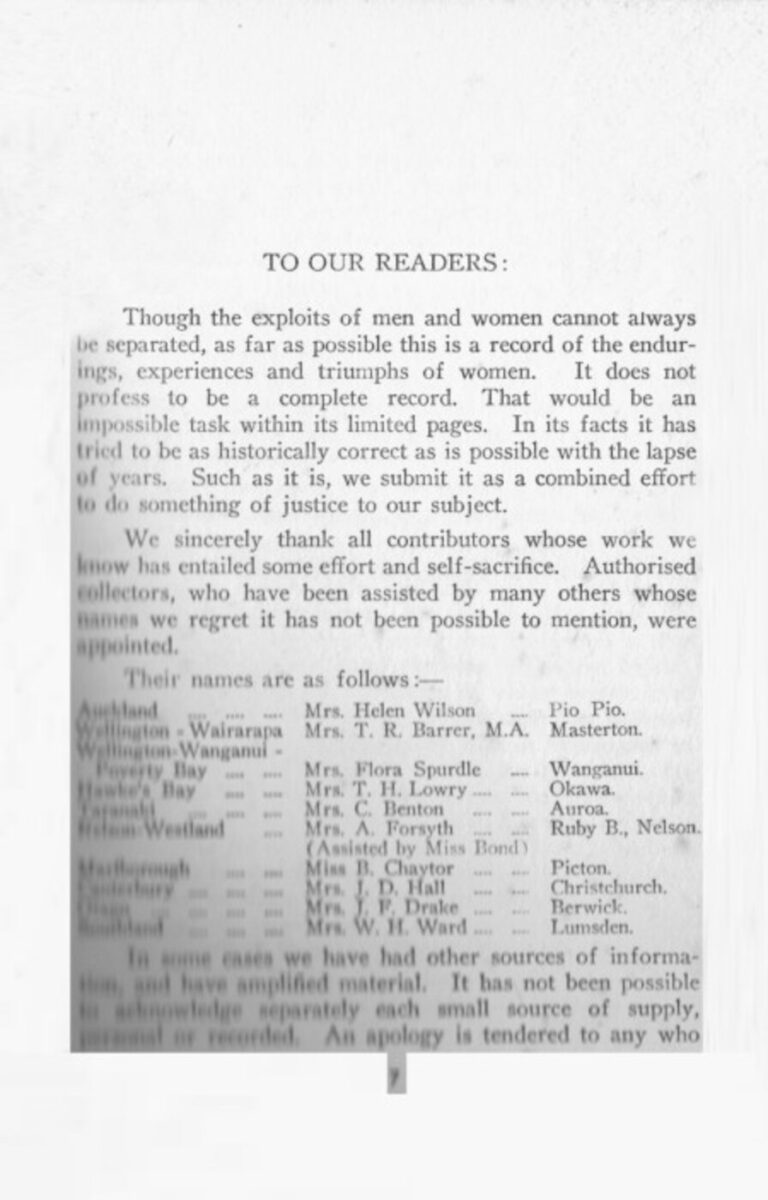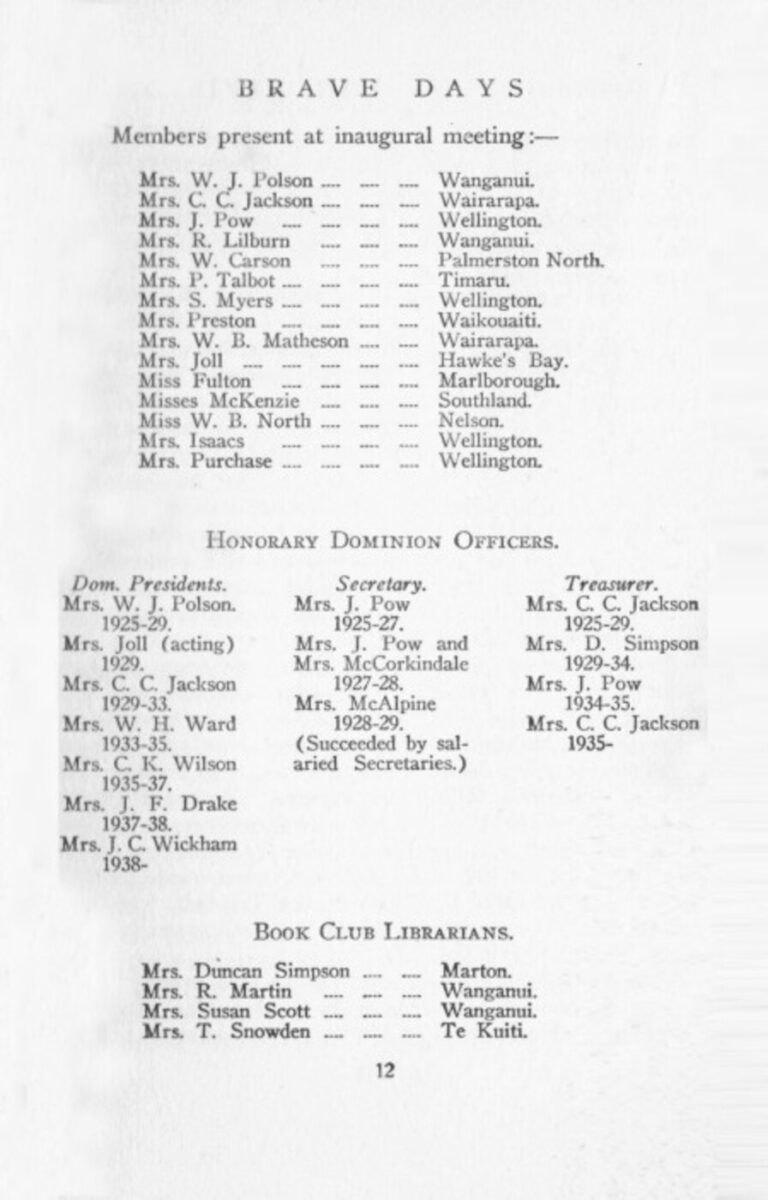Brave Days – Pioneer Women of New Zealand
Original digital file
BraveDays.pdf
Non-commercial use

This work is licensed under a Attribution-NonCommercial 3.0 New Zealand (CC BY-NC 3.0 NZ).
Commercial Use
Please contact us for information about using this material commercially.✖
Can you help?
The Hawke's Bay Knowledge Bank relies on donations to make this material available. Please consider making a donation towards preserving our local history.
Visit our donations page for more information.
Description
Only sections relating to Hawke’s Bay have been included
Subjects
Tags
Business / Organisation
Women's Division of the New Zealand Farmers' UnionFormat of the original
Book hardbackDate published
1939Publisher
AH and AW ReedPeople
- Mrs Birch
- Willie Birch
- Mrs Bernard Chambers
- J H Coleman
- Mrs J H Coleman
- Governor Eyre
- Mrs John Giblin
- Mr and Mrs Herbert
- Mrs John Joll
- Mrs T H Lowry
- T H Lowry
- Mr and Mrs Lowry
- Percy McHardy
- Dr Meinertzhagen
- Mr and Mrs Charles Nairn
- Mrs J D Ormond, nee Richardson
- Tom Redward
- Bishop Selwyn
- Mrs Thomas (Julia) Tanner
- James Watt
- Sir George Whitmore
- Bishop Herbert Williams
- Mrs J N (Mary Margaret) Williams, nee Beetham
- Miss Kate Williams
- Archdeacon Leonard Williams
- Mrs Leonard (Sarah) Williams
- Reverend Samuel Williams
- Mrs William Williams
- Willie Williams
- Jimmy Wilson
- Mesdames Sherrat, St Hill, Wilson
- Gordon, Hutchinson, Moore
























Do you know something about this record?
Please note we cannot verify the accuracy of any information posted by the community.